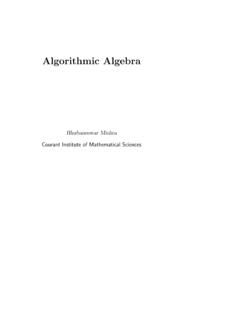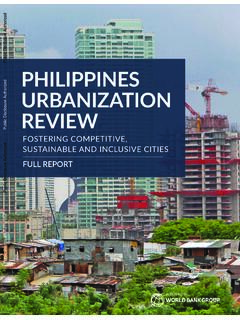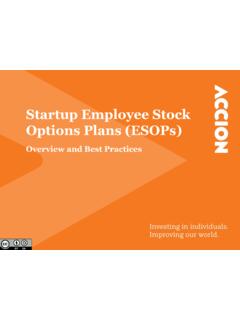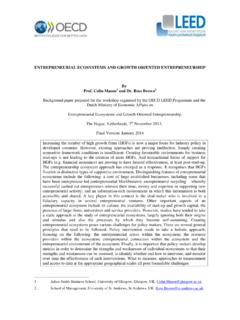Transcription of Research Statement - New York University
1 1 Research Statement Lakshminarayanan Subramanian (New York University ) My Research interests are in the areas of networking and computing for development. My Research is driven by a strong desire to bridge the digital divide and make computing useful to the significant fraction of the world s population that lives in under developed areas with very limited resources. My Research specifically focuses on: Extending Internet connectivity and enhancing the availability, reliability and usability of the Internet and the Web. Designing new computing solutions to address real-world problems pertaining to global social and economic development.
2 Computer science, as a field, has largely focused on problems relevant to the developed world. The Internet and the World Wide Web have remained largely urban phenomena, which mean that a significant fraction of the developing world, especially in rural and underdeveloped regions, remains disconnected from the rest of the world. Bridging this digital divide requires us to address several important and challenging computer science Research problems whose solutions will ultimately have significant impact on global development. Conventional computing solutions are often inappropriate in these emerging contexts due to various contextual factors including lack of infrastructure, limited purchasing power, poor connectivity, limited power, language and literacy issues, and lack of local expertise for managing systems.
3 These unique infrastructure, cost, power and connectivity constraints create several new Research challenges which often require a fundamental rethinking in the way we design computing solutions. My Research philosophy places a strong emphasis on end-to-end system design solutions for developmental problems. We use a three step Research process. First, we perform field trials with various organizations in developing regions to understand the ground realities and identify challenging problems. Second, we design and implement cost effective and appropriate computing systems that address the most difficult problems.
4 Third, we deploy our systems in the developing world (with support from ground organizations), rigorously evaluate the system effectiveness and also perform impact evaluation studies where appropriate. Wherever viable, we seed startups to bring about large scale, sustainable deployment. To date, three such startups have been created and a fourth one is being explored. I joined as the first faculty member in NYU in the field of networking and together with Prof. Jinyang Li (who also joined in 2006), we established the Networks and Wide-area Systems (NeWS) group ( ); the NeWS group has grown significantly to 11 PhD students, two postdocs and several MS students.
5 To promote my Research agenda in computing for development, I established the CATER Lab ( ), a multidisciplinary Research initiative across Computer Science, Economics, Public Health and Public Policy. During the early stages of bootstrapping the NeWS group and the CATER Lab (2006 2008), I worked closely with three PhD students in the TIER group at UC Berkeley. More recently, in 2010, I worked with Prof. Yaw Nyarko (Economics) to establish the Center for Technology and Economic Development (CTED) at NYU Abu Dhabi ( ). The CTED center at NYU Abu Dhabi has contributed immensely to the real world success of many of our Research projects in terms of planning deployments, conducting large scale randomized controlled evaluations of computing for development solutions, establishing a strong cross collaboration between CS and Economics students, and attracting excellent NYUAD undergraduate students to work with CTED.
6 I am also co leading the efforts to establish SIGDEV, an Association of Computing Machinery (ACM) Special Interest Group on Computing for Development. The flagship conferences of SIGDEV are the International Conference on Information and Communication Technologies for Development (ICTD) and the ACM Symposium on Computing for Development (DEV). ICTD and DEV have been co located conferences since 2010 and together, they attract over 700 researchers from different sub disciplines. Next, I will describe my key Research contributions and the impact of my work, grouped by Research themes. Since all these projects are joint works with my students, I will use the words we and our when describing the Research contributions.
7 2 1. Rural Connectivity A significant fraction of rural regions remains disconnected with no network connectivity. Conventional wire line connectivity solutions (fiber, broadband and dial up) and wireless connectivity solutions (WiMax, cellular or satellite) are not economically viable for regions with low purchasing power and low user densities. Achieving economic sustainability in the face of low demand imposes several practical design constraints: low network costs, low power consumption, high reliability and low management overhead. In contrast, cellular networks consume very high power and also face high capital and operational expenses (tower, power, management, spectrum).
8 Achieving a combination of high-performance, high reliability and low power consumption is a fundamentally hard problem. Performance is often terrible in rural settings due to extremely poor signal quality at long distances. A second factor that affects performance of wireless networks is interference. Rural regions lack stable and reliable power sources; grid power also exhibits significant fluctuations (between 1000 V to +1000 V) that result in high device failure rates. Finally, managing rural wireless networks is very hard due to problems with reliability and power and lack of local management expertise.
9 Our long term goal in the Wireless Rural Extensions (WiRE) project is to design an extremely low cost, high performance, low power, highly reliable and easy to manage rural wireless network where the entire network is completely solar powered with no dependence on the power grid. Addressing the rural connectivity problem has been a fairly massive initiative and this is joint work with several students at NYU and Berkeley (co advised with Prof. Eric Brewer at UC Berkeley and Prof. Jinyang Li at NYU): Aditya Dhananjay (NYU CS), Matt Tierney (NYU CS), Wei Chih Lu (NYU Poly), Rabin Patra (Berkeley), Sergiu Nedevschi (Berkeley), Sonesh Surana (Berkeley), Ariel Nevarez (NYU ITP), Nahanaeli Schelling (NYU ITP), Meredith Hasson (NYU ITP).
10 Together, we have made several important contributions that address many of the hard challenges in the WiRE network architecture vision. One key component of the WiRE architecture is the design of high performance multi radio mesh networks to provide connectivity within rural regions. Achieving high performance in a wireless mesh network is challenging due to self interference across multiple hops. We have designed, implemented and evaluated ROMA, a practical distributed channel assignment and routing protocol which maximizes the end to end throughput between every node and a gateway in a multi radio mesh.


















